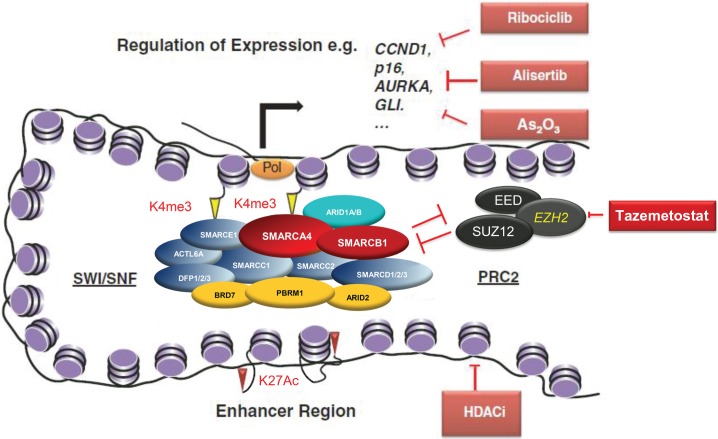Fig. 1.
Epigenetic roles of SMARCB1 in promoter activation, occupancy, and enhancer modification, including potential therapeutic targeting. The SWI/SNF complex modulates gene transcription including by (i) regulation of nucleosome positioning at promoters and consequently transcription factor binding and accessibility to the transcription machinery (Pol), (ii) antagonism of the Polycomb repressive complex 2 (PRC2), thus opposing the repressive H3k27Me3 mark written by PRC2 and favoring an active H3k4Me3 modified promoter, and (iii) localization at enhancers where the complex may contribute to transcription regulation, although the mechanism remains poorly understood. The SWI/SNF complex is bound at most active genes and the transcription of many genes are affected by SMARCB1 loss. Among others these include CCND1, GLI1, and AURKA, which may be therapeutically targeted by ribociclib, arsenic trioxide, and alisertib, respectively. The chromatin antagonizing effects of EZH2 may be therapeutically targeted by tazemetostat.

